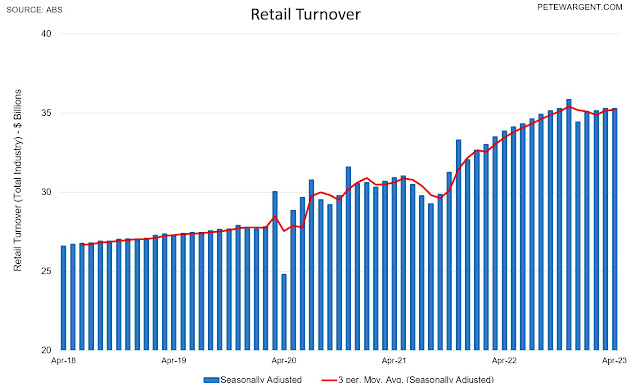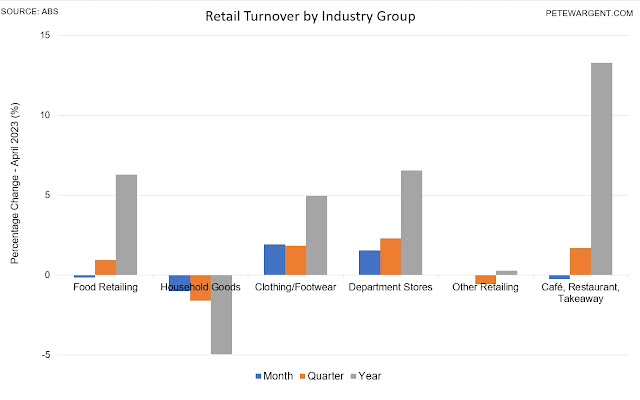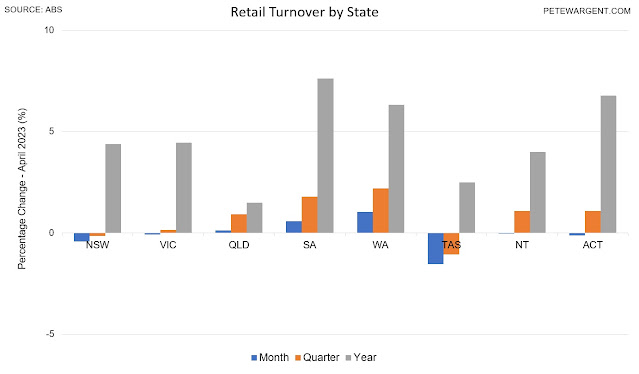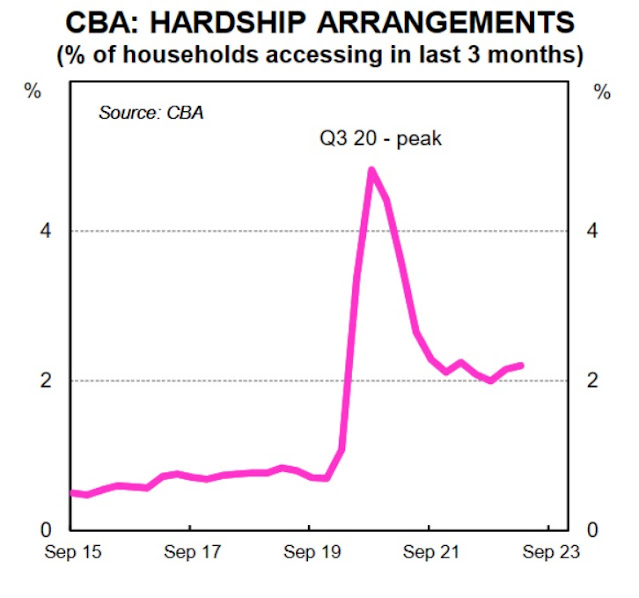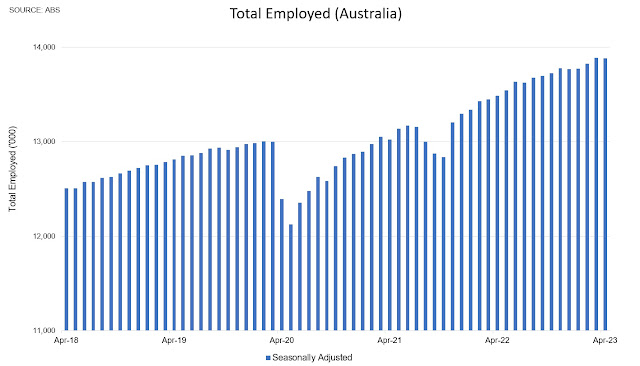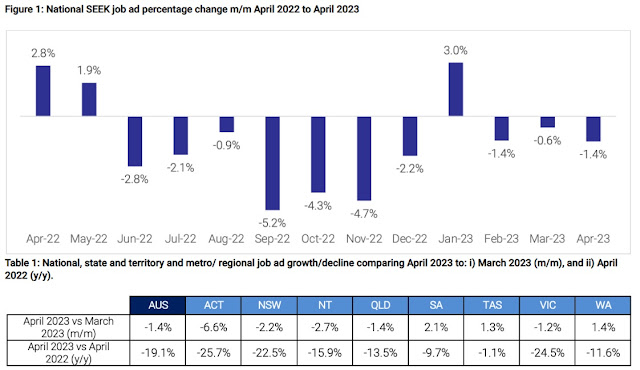Sydney unit rents led the way over the year rising +19.3 per cent, with Brisbane units +16.4 per cent.
Wednesday, 31 May 2023
Pack 'em up, pack 'em in (time to get a flatmate)
Sydney unit rents led the way over the year rising +19.3 per cent, with Brisbane units +16.4 per cent.
Tuesday, 30 May 2023
Tim-berrrr: Building approvals lowest in 11 years
Tim-berrr...
Building approvals continued to crash in April, with unit approvals soft all year in Sydney and Melbourne.
Unit approvals were -35 per cent lower than a year ago, with Sydney and Melbourne leading the plunge.
Source: Aus Gov, Labour Market Insights
Materials are also going to remain a problem for the industry.
Population growth is projected to be 4.4 million over the next decade, yet the native timber logging industry is following on from the power stations to be shut down by the Victorian government, so I'm not sure what the plan is to resolve all that (assuming there is one).
Probably importing expensive timber instead, I guess.
Sunday, 28 May 2023
Aussie population passes 26½ million
2-Sense podcast: Big 3 property news stories of the week
Saturday, 27 May 2023
Retail sales going backwards
Thursday, 25 May 2023
Demographics and property with Simon K
Wednesday, 24 May 2023
ausbiz TV: Property roundup
Tuesday, 23 May 2023
Aussie households cut spending hard
Monday, 22 May 2023
NSW leading wages strength, but...
Wages growth decelerating
Over the past year, the growth in advertised wages has been led by Queensland, with a very solid +5.5 per cent.
However, over recent months the trend has been coming off hard, except in New South Wales, which still managed +1.2 per cent growth in the wages index over the past quarter.
Source: SEEK
The growth between March and April was just +0.2 per cent.
There's only been modest growth in this index over the past six months.
Sunday, 21 May 2023
Inflation to surprise on the downside
2-Sense: Big 3 property news stories of the week
Sydney leads housing recovery
Auctions bounce
Sydney is suffering from a chronic shortage of quality stock on the market, and the auction market is running increasingly hot.
The preliminary auction clearance rate for Sydney was 79.3 per cent this weekend, and getting close to the 'boomtime' 80 per cent level.
















